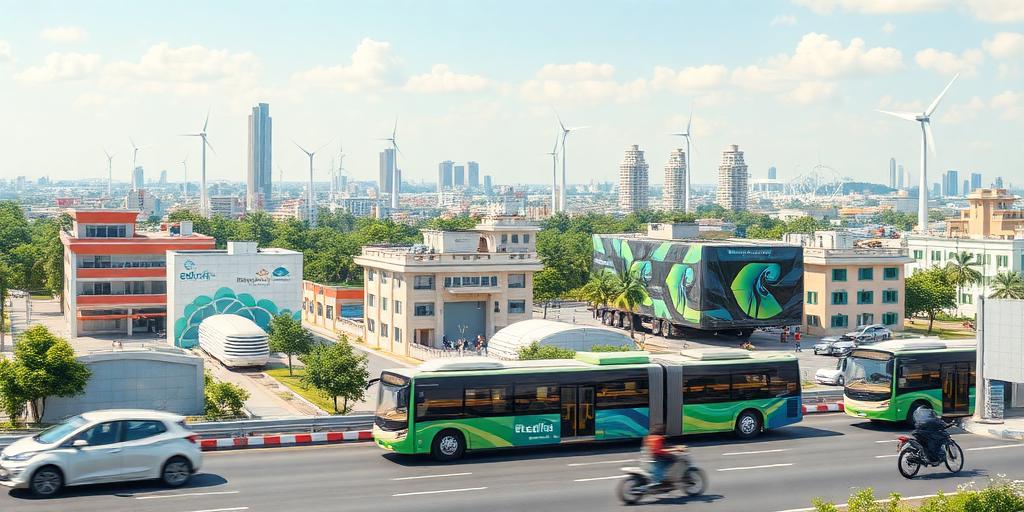The Electric Vehicle Revolution in India: Charting the Course for Tomorrow's Mobility
India stands at the cusp of a transformative shift in its transportation landscape, driven by the burgeoning electric mobility (e-mobility) sector. As concerns over air quality, energy security, and climate change intensify, the adoption of electric vehicles (EVs) presents a compelling solution. This article delves into the current state of e-mobility in India, analyzes the key drivers and challenges, and forecasts the trajectory of this rapidly evolving industry.
Current Landscape: A Nascent but Promising Market
India's e-mobility market is currently in its nascent stages, but it exhibits significant growth potential. The government has set ambitious targets to achieve 30% EV penetration by 2030. Recent years have witnessed a surge in EV sales, particularly in the two-wheeler and three-wheeler segments, driven by factors such as:
- Government Incentives: Subsidies under the Faster Adoption and Manufacturing of Electric Vehicles (FAME) scheme have lowered the upfront cost of EVs, making them more accessible to consumers.
- Falling Battery Prices: Advancements in battery technology have led to a decline in battery prices, which account for a significant portion of the overall EV cost.
- Increasing Awareness: Growing awareness of the environmental and economic benefits of EVs has fueled consumer demand.
- Entry of New Players: A host of domestic and international players are entering the Indian EV market, offering a diverse range of products and services.
Key Drivers of E-Mobility in India
Several factors are propelling the growth of e-mobility in India:
- Policy Support: The government is actively promoting e-mobility through policies such as FAME, EV manufacturing hubs, and charging infrastructure development.
- Environmental Concerns: Air pollution is a major public health crisis in India, particularly in urban areas. EVs offer a cleaner alternative to traditional vehicles, helping to improve air quality.
- Energy Security: India is heavily reliant on imported oil, which makes it vulnerable to price fluctuations and geopolitical risks. EVs can reduce this dependence by utilizing domestically generated electricity.
- Economic Benefits: EVs have lower operating costs compared to gasoline vehicles, due to lower fuel and maintenance expenses.
- Technological Advancements: Rapid advancements in battery technology, charging infrastructure, and EV design are making EVs more efficient, affordable, and convenient.
Challenges and Roadblocks
Despite the promising outlook, the Indian e-mobility market faces several challenges:
- High Upfront Costs: EVs are still more expensive than their gasoline counterparts, despite government subsidies.
- Limited Charging Infrastructure: The lack of adequate charging infrastructure is a major deterrent for EV adoption, particularly in smaller cities and rural areas.
- Range Anxiety: Concerns about the limited range of EVs and the availability of charging stations can discourage potential buyers.
- Battery Life and Replacement Costs: The lifespan of EV batteries and the high cost of replacement are major concerns for consumers.
- Supply Chain Constraints: The availability of critical components such as batteries and semiconductors can be a challenge.
- Lack of Awareness and Misconceptions: Many consumers still lack awareness about the benefits of EVs and harbor misconceptions about their performance and reliability.
Future Trajectory: A Promising Outlook
The future of e-mobility in India appears bright, with significant growth expected in the coming years. As battery prices continue to decline, charging infrastructure expands, and government support strengthens, EVs are poised to become increasingly competitive with gasoline vehicles. The following trends are expected to shape the future of e-mobility in India:
- Localization of Manufacturing: Increased localization of EV manufacturing will help to reduce costs and create jobs.
- Development of Advanced Battery Technologies: Advancements in battery technology will lead to longer ranges, faster charging times, and improved battery life.
- Expansion of Charging Infrastructure: A robust and widespread charging infrastructure will be critical to support the growth of EV adoption. Government and private sector investments will be crucial in this regard.
- Integration of Renewable Energy: Integrating EVs with renewable energy sources such as solar and wind power will further reduce their environmental impact.
- Development of Smart Charging Solutions: Smart charging solutions that optimize energy usage and reduce grid stress will be essential.
- Increased Adoption in Commercial Fleets: Commercial fleets, such as taxis and delivery vehicles, are expected to be early adopters of EVs, driven by their lower operating costs.
Conclusion: A Sustainable and Electrified Future
The transition to electric mobility in India is not merely a technological shift; it represents a fundamental transformation of the country's transportation ecosystem. By addressing the challenges and capitalizing on the opportunities, India can pave the way for a sustainable, efficient, and electrified future. The collaborative efforts of government, industry, and consumers will be essential to realize this vision and unlock the full potential of e-mobility in India. The road ahead may be challenging, but the destination—a cleaner, greener, and more sustainable India—is well worth the journey.
Long-tail keywords: electric vehicle market India, EV charging infrastructure India, electric mobility policy India, future of EVs in India, EV battery technology India.









